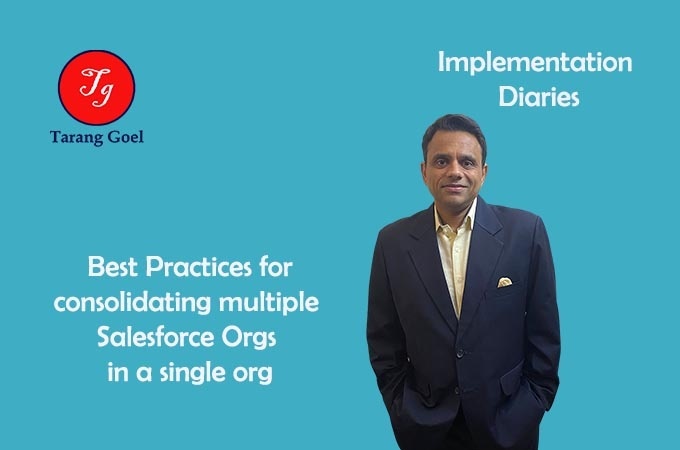Many enterprise customers have implemented multiple Salesforce orgs. There is often a need to consolidate these orgs into a single org due to standardization of business processes and the demand from users to work in an integrated environment. Consolidation is also required when businesses discover more interdependencies between the processes and there is an objective to cut maintenance costs arising out of multiple orgs.
However, a lot of caution needs to be exercised before going for org consolidation. This is because most of the times these multiple orgs have been implemented in silos and are completely mutually exclusive of each other. To consolidate them can be a tough task.
Here are some considerations and best practices for the same:
Data Modeling – It is important to study each org’s data model. As- is and to- be data models should be designed. This can be complicated and time consuming. Object level and record type level mapping should be done. It is possible that a several custom objects from multiple orgs can be consolidated into one. Look Ups and Master details should be analyzed.
Object Limits– If data model from different objects is merged into the same object in target org then object limits should be studied. These limits pertain to number of look ups, number of validations, number of fields, number of master details relationships, look up filters, validation rules, roll up summary fields etc. More information about object limits can be found in here- https://sforce.co/2QjfUXr
Record Type restructuring -If data of the same object is consolidated then it is important to also consolidate and map the record types between the source and target org. For example, accounts can be stored in different record types in each org. This needs to be mapped to the record types in target org.
Value add for users– It is important to find interlinkages between different processes, as well as gather a list of user demands while executing this consolidation. It is also a great opportunity to get rid of unwanted processes. This provides a great deal of value add to the users which ultimately results in higher user adoption and is useful in positive and higher ROI.
Regression Testing – In order to make this consolidation a success, regression testing is most important, and the role of QA becomes critical.
Integration considerations – Org consolidation also requires a comprehensive integration strategy. The main elements of this strategy are data integration, continuous integration and process integration. Re-orchestration of middleware system should be analysed in view of org consolidation.
Code Integration— Orgs are created at different times. With continuously evolving declarative and coding patterns, it is possible that the code and meta data can be refactored. For example, multiple workflows can be consolidated into a single workflow or into a process builder.
Finally, in terms of how to go about consolidation, I believe that this work can be divided into 3-4 buckets. Pure lift and shift work, Lift and shift with refactor, new requirements and data migration. These buckets can be useful to scope and estimate the effort. I have tried to provide a lot of information through this overview.
If you have a question and want to know about a specific point, please feel free to write to me. I hope this has given you a decent understanding of the consolidation scenarios.
Your likes, comments and share’s will motivate me to keep writing.


0 Comments